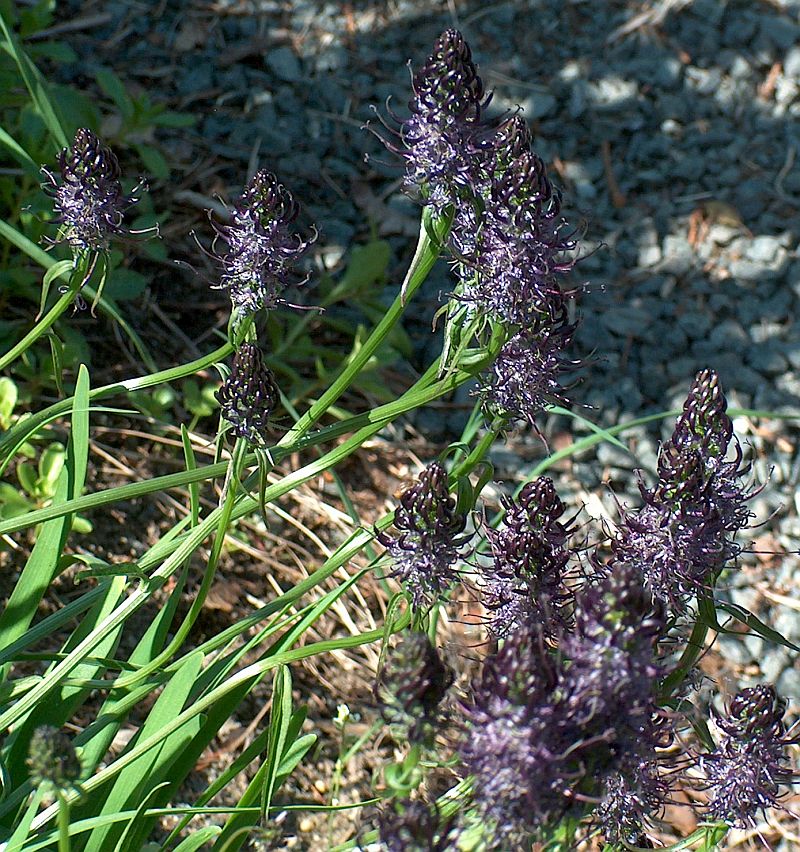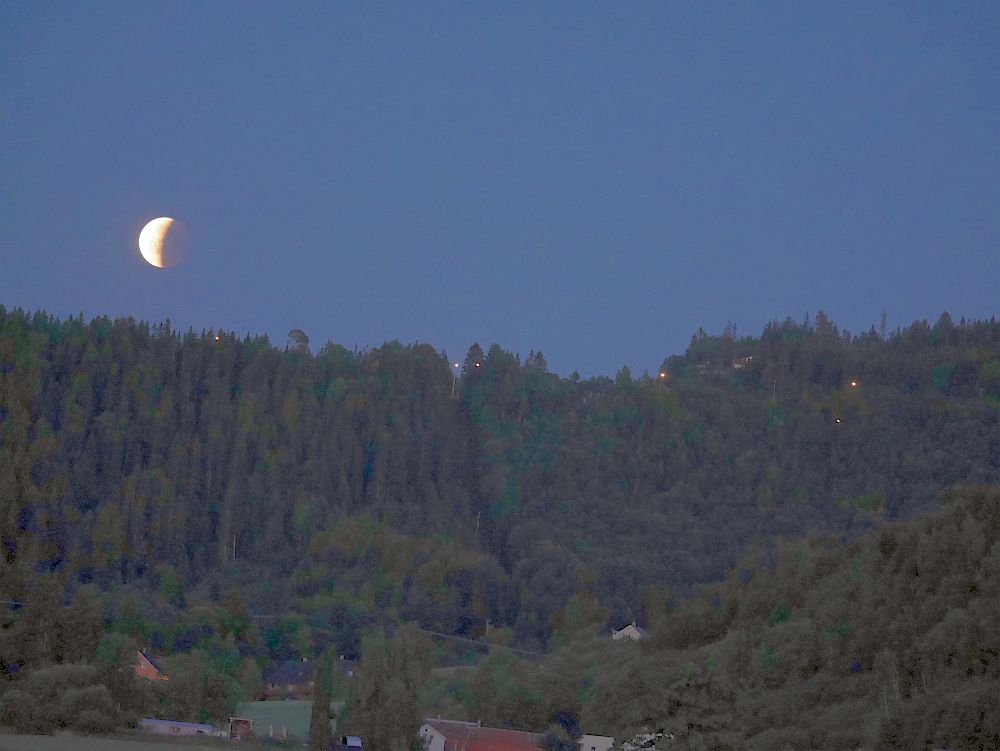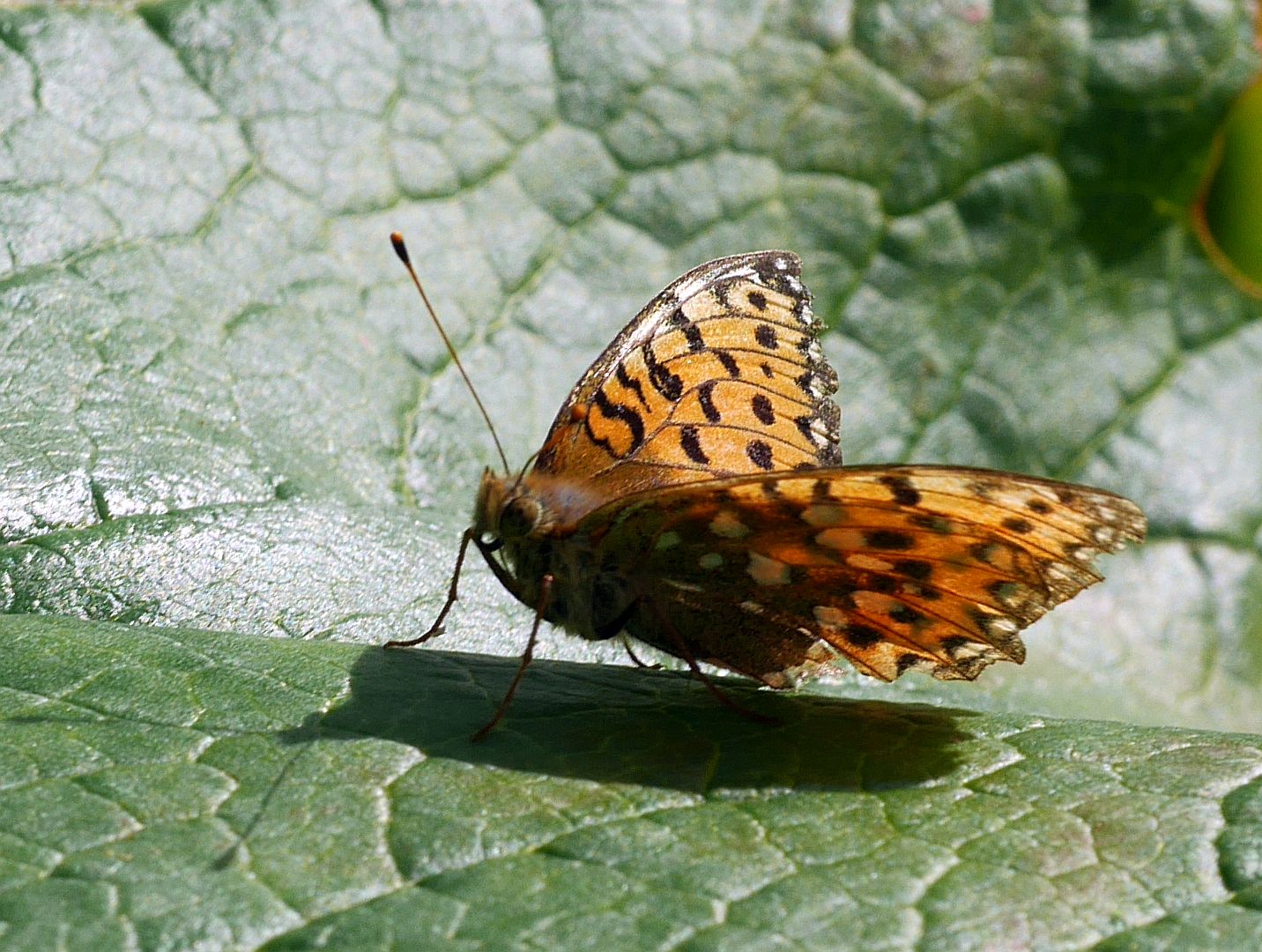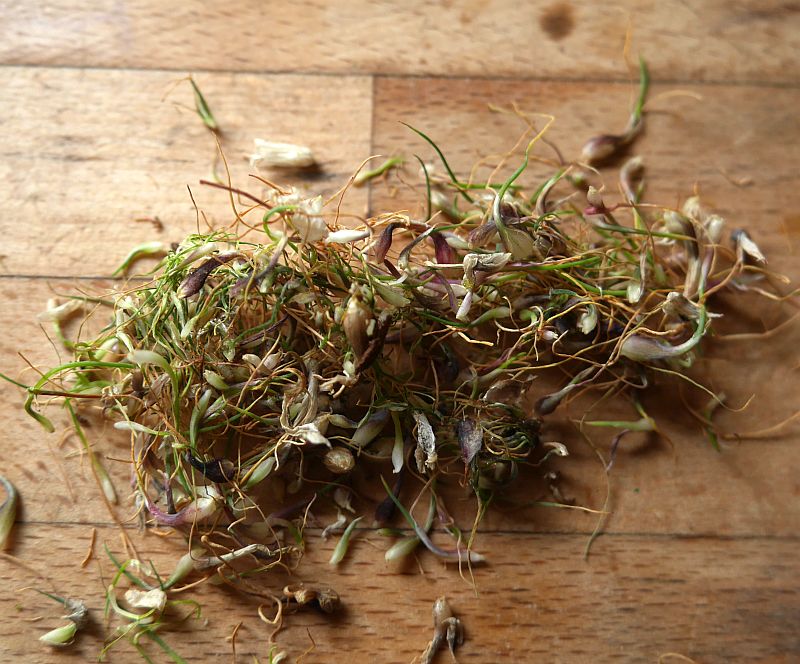Lenticular clouds this morning heralding another warm but windy day up here!

Lenticular clouds this morning heralding another warm but windy day up here!

I let chicories self-sow in the garden and after introducing many vegetble cultivars and ornamentals I have a bit of a mix of flower colours and forms! Here are a few from this week!
The most successful of the half dozen Phyteuma species I’ve tried in my garden has been a plant received as Phyteuma nigrum (syn. Phyteuma spicatum ssp nigrum), black rampion or (Norwegian) svartvadderot. It has much darker flowers than Phyteuma spicatum, sometimes almost black. I planted it from seed propagated plants in 2003 and this picture is from 2006-2007:

It has self-sowed freely and seems to have crossed with other accessions of Phyteuma spicata with white and blue (ssp. caeruleum) flowers that I have in my garden (these have not self-sowed much) as there is now a mix of colours in the original spot I planted nigrum. Phyteuma spicatum/nigra is also the most popular bee plant in my garden in mid-June and a great edimental (one of the edi-entomentals, plants combining food, ornament as well as good for bees and other pollinators!). Phyteuma spicatum (rapunsel) is a very old root vegetable in Europe, mentioned already in Gerard’s Herball from 1597, but best known as a vegetable in France and Germany! The name rapunsel is related to rapa (turnip) due to its use as a root vegetable!
See my blog post from 23rd June 2017 with pictures and video of black rampion: http://www.edimentals.com/blog/?p=11910
I tried Phyteuma spicatum as a root vegetable in 2013 and was struck by its good sweetish taste:
I harvested a lot of plants this week (late July 2018) while remaking the bed where it was growing and was impressed by the good size of roots and yields, although it is unknown how old the individual plants were (I plan to grow some of the smaller plants elsewhere to see how quickly they grow in a shady area of the garden, as this could be a good forest garden plant, although, like Jerusalem artichoke, plants in the Campanulaceae to which Phyteuma belongs, contain the diabetic friendly but poorly digestable carbohydrate inulin):
The flower heads can also be used as a vegetable, reminiscent of Bath Asparagus flower heads (Ornithogalum pyrenaicum) see the picture from its wiki page:

I saw the plant in the wild for the first time in Austria in the Alps on my Arche Noah tour in 2017 (see http://www.edimentals.com/blog/?p=11483), the white flowered form, growing in open woodlands.
In Norway, it grows wild a few places in southern Norway and has also naturalised in parks, including the great garden at Baroniet Rosendal (see the video and pictures at http://www.edimentals.com/blog/?p=15680). It is also found in the far north of Norway in Finnmark where it naturalised during World War II, introduced by the Germans with horse forage!
The name rapunsel is related to rapa (turnip) due to its use as a root vegetable!
http://www.edimentals.com/blog/?p=11910 (with video)
Other European languages: Raiponce en épi (French), ährige Teufelskralle (German), ährige Rapunzel (Swiss German), and Raponzolo giallo (Italian)
I’ll be offering seed this autumn via Norwegian Seed Savers (KVANN):
A few pictures from last night’s ecliptical moon rise. Because of the hills in the south the full eclipse wasn’t visible!




Green-veined white (rapssommerfugl) on Patrinia triloba v. takeuchiana (honeysuckle family)


I “noticed” a few days ago that my little girl Hazel had reached half my age (in number of days)! It was noticed that Hazel would be half my age in years on my next birthday in April 2019…..so thought this 23,131 day old man, when will she be exactly half my age in number of days? I couldn’t find a web page to do the calculation, so had to revert to the old method of setting up a complicated set of simultaneous mathematical equations…..to come up with the answer that I had missed it by two weeks :(
We decided to celebrate anyway and we ate a gourmet dinner incluidng a 1/2 birthday salad, using garlic scapes to write 1/2 on the salad!
..and, please, no comments that I dont look a day younger than 3 times her age ;)
A seldom guest in the garden this morning, a dark green fritillary / Aglajaperlemorvinge (Argynnis aglaja) and the Buddleja is in flower record early!




Kurrajong is an Australian tree, Brachychiton populneus, which along with other species of the genus make interesting house plants due to their interesting leaves. Kurrajong leaves resemble poplar leaves as the epithet populneus suggests. It’s a common tree of sandy plains in Eastern Australia. The seeds are remarkably nutritious and were popular Aborigine tucker (wild gathered food). It is unlikely I will ever be able to harvest seed of this tree in the Malvaceae (mallow family), but Rowan White on the Radix Root Crops FB group reminded me that the swollen roots of young trees could also be eaten. My tree wasn’t exactly young at 9 years (seed propagated along with Brachychiton acerifolius), when I first decided to have a go in 2012, at the same time as I moved it to a bigger pot…
There were 3 young roots worth trying so I harvested them and baked them in their skins together with potatoes. They seem to need a bit longer than potatoes. The skins peeled easily off after baking and they were crispy with a good mild taste. If you have a ready supply of seed, they can be grown and harvested a bit like carrots when quite young!
This spring the tree died (at 15 years old) with no sign of life in the above ground parts, but when disposing of the plant I noticed that the young roots looked healthy, so I harvested them and repotted the remainder of the root to see if it might resprout and after several weeks in the window sill it now has fresh leaves, so not dead after all!

I didn’t get round to eat the young roots…they were left inside for a month and looked withered and inedible, but cutting in to one it looked good inside and indeed it was tasty and almost free from fibre….so we ate it in a stir-fry dish last night!
